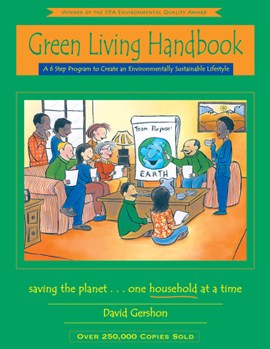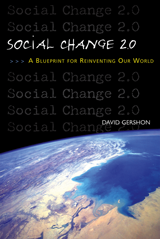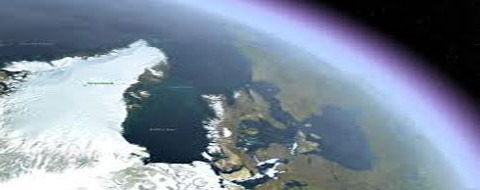How does the SLC conserve natural resources and reduce waste?
The program is designed to help households systematically evaluate their environmental impact, learn of actions they can take to lower it, set up a support group to help them follow-through on the choices they make, and provide feedback to positively reinforce the benefits of the actions taken so they are sustained over time.
What size community is affected by an SLC?.
The Green Living Program works at the block level with groups of five to eight households called an EcoTeam. A campaign is designed to grow and eventually impact larger and larger numbers of community residents through applying a growth model know as “social diffusion.” This model was developed by a Stanford University social science researcher through observation of the diffusion of innovations in over 1,500 case studies. The Sustainable Lifestyle Campaign starts with households and neighborhoods that are naturally attracted to this innovation called “early adopters” — approximately 15 percent of a population. This is designed to create a groundswell so that the program can start diffusing on its own momentum and achieve deeper program participation. The campaign cultivates this phenomenon within neighborhoods and amongst neighborhoods and has seen deep diffusion occur quite regularly at the block and neighborhood level.
Does the program reach a unique population?
The population reached is a broad cross-section of the community. Over 80 percent of residents approached by neighbors are interested in attending the neighborhood information meeting. About half actually come and about 75 percent of those attending, join teams. This boils down to approximately one out of every four people approached by a neighbor participating in the program. The program and recruitment model has proven very successful in middle income neighborhoods. The program requires modification and extra resources to work in low income neighborhoods but with these adjustments has been successful.
Are jobs, industries, business opportunities created by an SLC?
Sustainable Lifestyle Campaigns strengthen the green businesses of the community by generating new customers.
Does the SLC reduce costs or improve efficiency?
It helps local governments reduce costs of delivering essential services. It helps individuals reduce costs in managing their households.
What specific economic benefits result from the program and who benefits?
Residents of the community benefit by saving money and local government agencies often reduce the costs of delivering services or infrastructure and see increased participation in revenue producing activities such as public transportation.
Does an SLC apply existing resources or develop new tools to address a problem?
The program is a new tool that is directed at the efficient use of existing resources—natural and financial. The program enables local governments to use financial resources, that often go into expanding infrastructure, to be used more cost-effectively by enabling households to develop resource-efficient behaviors that reduce the need for landfill space, water resources, energy resources, road size and rebuilding and health costs through reduced air pollution. Overall it helps the community develop both a practical demand-side management approach and conservation ethic.
Can the SLC be replicated in other communities with similar challenges?
This program is designed for replication. It has been used in many different size communities—urban, suburban and rural—in over thirty states. It is flexible enough so it can be customized to the unique situation of each community.
How does the SLC further sustainability?
By helping citizens conserve natural resources, it enables local governments to better steward the community’s natural resources. In certain cases this reduces the costs for service delivery and forestalls new infrastructure expenses. It helps households save money through resource efficiency, approximately $200–300 per-household per-year. This serves as the equivalent of a yearly tax rebate and economic stimulus for the households and communities participating in the program. It creates an environmentally literate populace and encourages advocacy for sustainable community development policies and programs. The program builds leadership, empowerment and community-building skills within the community’s neighborhoods.
Does the SLC contribute to long-term economic renewal and growth?
By helping the community better manage its natural resources and improve its environmental quality it becomes a more attractive place to live and work thus attracting and retaining businesses and improving its tax-base. By strengthening neighborhoods and making them more attractive it reduces migration out of the community, particularly in larger cities. By increasing the efficiency of citizens’ natural resource use it defers the cost of major infrastructure projects (i.e. water treatment, landfills) thus making these funds available for other projects of community development.
Does success of the SLC depend on on-going cooperation among diverse groups?
Yes. This program brings all sectors of the community, as well as various local government agencies and private utilities, together in a common effort. Through this, much dialogue, learning and cooperation occur. This process of working together creates the commitment that keeps all the parties involved for the long-term.
Does the SLC protect one sector without subjecting others to hazards?
Yes. The program is designed to help any part of the community that participates with no negative outcomes in any other part. In fact, it spreads positive outcomes to other parts of the community through serving as a role model for the benefits of the program.
Does the SLC provide financial incentives to pursue environmentally sound practices?
The program itself offers a financial incentive by helping households save money through resource-efficient living. The money saved we call an “ignorance tax” that they no longer have to pay. Also, whenever possible, campaign funding partners provide financial incentives for households to experiment with new environmental behaviors through opportunities such as free transit passes and reduced costs for compost bins.
Does the program address a community health concern?
The principal health impacts are on air and water quality. The program’s transportation and energy actions help improve overall air quality and reduce ground-level ozone. The program’s water quality actions help reduce nonpoint-source pollution of the community’s water bodies.
Does the program work with collaborative planning and consensus-building?
Collaborative planning and consensus-building are how EcoTeam participants determine which actions they are going to do together. These tools help the various government agency and private utility financial partners work together to achieve their individual goals within the context of a community-wide campaign. The program also brings citizens together with local government in a spirit of cooperation and collaboration for actively addressing the challenges of developing a sustainable community.
What makes the program innovative?
The program empowers citizens to successfully and voluntarily lower their environmental impact. It enables local and state government agencies to effectively help citizens change behavior that adversely impacts the environment. The program’s replicability combined with the ability to customize it to each municipality and client also make it innovative. The program both improves the environment and generates social capital that can be reinvested in the neighborhood and community at-large.
What measures do you use to determine effectiveness?
The principal measures are natural resource savings, EcoTeam formation, number of neighborhoods and blocks in which program is delivered, government agency information or services used by residents, and cost-benefit analysis per government agency investor.
What lessons have you learned in implementing the Sustainable Lifestyle Campaign?
Good ideas are hard to come by, but even harder is the effort necessary to perfect a good idea. To be effective one needs, among other things, to develop a learning organization. For Empowerment Institute this has been done by carefully de-briefing program participants, staff and clients. Households who go through the program are debriefed in their final meeting. Community program staff are carefully debriefed in regular coaching calls. Campaign staff debrief and support one another in “master classes” which also solve common challenges. Regular discussions take place with clients to explore ways to better accomplish our mutual goals.
 “The Green Living Program has demonstrated results and can make a real difference. In our work with communities across America this is exactly the sort of tool for which they are searching.”
“The Green Living Program has demonstrated results and can make a real difference. In our work with communities across America this is exactly the sort of tool for which they are searching.”

 Journey for the Planet
Journey for the Planet To learn more about the Social Change 2.0 framework and research underpinning the Green Living Program see Social Change 2.0
To learn more about the Social Change 2.0 framework and research underpinning the Green Living Program see Social Change 2.0